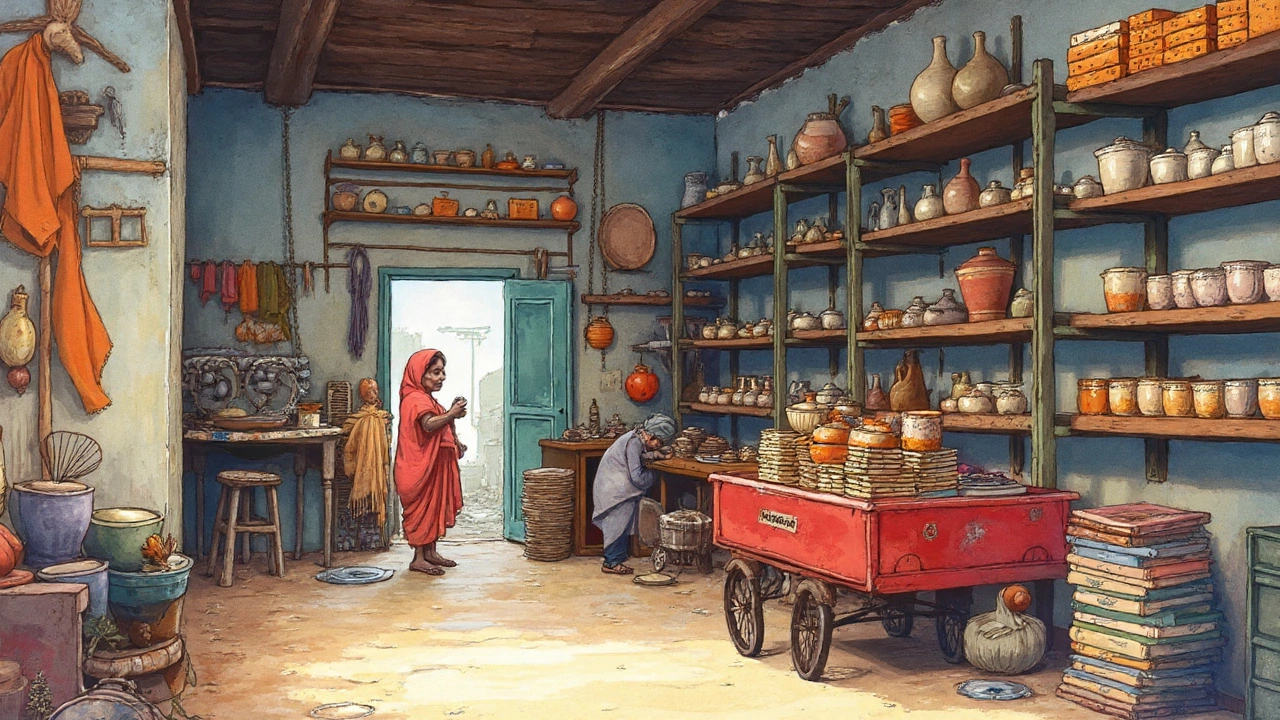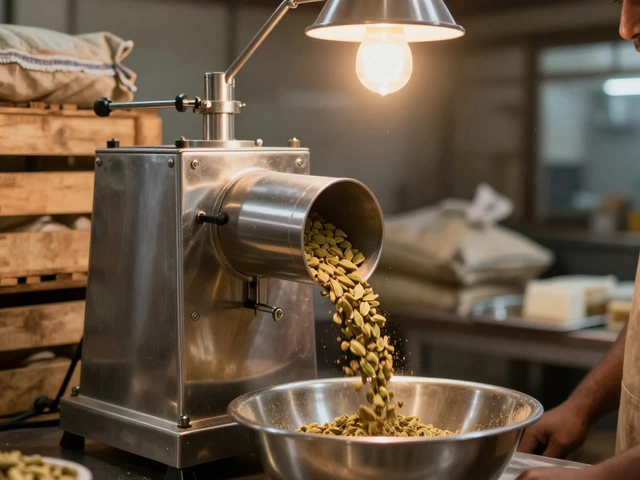Step-by-Step Guide to Launching a Small Scale Industry Successfully

Ever wonder why so many people ditch desk jobs to launch their own factory? For a lot of folks, the appeal is independence, financial growth, and being the boss. But here’s the deal: starting a small scale industry is nothing like opening a food truck or launching an online shop. You aren’t just making things—you’re designing supply lines, wrangling with regulations, and building new opportunities for yourself and others. For anyone who’s toyed with the idea, this is where fantasy ends and the real work starts.
Understanding Small Scale Industries: What They Are and Why They Matter
Small scale industry (SSI) usually means a business with limited employees, machinery, and capital investment. In India, for example, the MSME Act puts a small manufacturing business at investment up to ₹10 crore and turnover up to ₹50 crore. Australia’s criteria are a bit different, but the vibe is the same—fewer than 20 employees, modest equipment, and a direct line between your creativity and the stuff you make. SSIs pop up pretty much everywhere: food processing, furniture, electronics parts, garment stitching, sports goods, and even chemical mixing.
These businesses pull a surprising amount of weight. SSIs provide about 45% of industrial jobs in India and 97% of all registered manufacturing businesses in Australia fall into this category. That’s not peanuts. And they generate sparks of innovation you just don’t get from giant corporations. Need another reason to care? They’re the backbone during tough economic times, offering flexible employment and local economic boosts. They can absorb shocks that big factories can’t—like COVID lockdowns or sudden price bumps—because they’re nimble and closely knit with their communities.
If anyone thinks running a small factory is just a side hustle, they’re dead wrong. The journey from idea to assembly line can be rough, but with the right approach, your odds climb fast. Let’s get real about picking your product, finding funding, wrangling regulations, and setting up smart operations.

Planning, Funding, and Legal Set-Up: Turning Your Idea Into a Real Business
You’ve got spark. Now, time to pour fuel on it. Start with the basics: what are you going to make? There’s a trick to choosing—mix your interests with real market gaps. Look for products with growing demand but not many quality suppliers. Check online marketplaces (Alibaba, IndiaMART, Global Sources) or your local shops for trends and shortfalls. For example, during 2023, handmade soap, eco-friendly packaging, and simple metal tools saw massive jumps in orders both in Sydney’s suburbs and in rural New South Wales. The sweet spot? Low entry barriers, steady demand, and room for improvement.
Once you’ve nailed the product, dig into market research. Don’t just google stuff—talk to shop owners, chat with potential buyers, snoop around trade fairs, and check government data. For manufacturing, figure out your supplier options, raw material access, and shipping costs. A 2024 survey in Australia showed 68% of successful small factories spent at least three months on market research before launching.
Funding the dream is where people freeze. You can dip into savings (risky but simple), try bank loans (look up government-backed small business loans), or tap angel investors—try local entrepreneur networks or startup meetups. Here’s a tip many folks miss: some regions offer grants or subsidized loans specifically for manufacturing. In New South Wales, the Manufacturing Modernisation Fund supported more than 30 small industry projects in 2023 alone, with grants up to AUD 100,000 for new equipment and training.
Legal stuff? It’s dry but crucial. Register your business name with your local authority. Choose the right structure—sole trader (easy, but you carry the risk), partnership, or a private limited company (safer if you plan to grow big). Don’t forget tax registrations—like GST in Australia or GST/SSI/Udyam in India. For manufacturing, you need licenses—factory license, pollution control (even for handmade stuff), fire and safety clearance, and possibly industry-specific certifications (think FSSAI for food or BIS for toys). Miss a paper, and your dream could go up in smoke.
Now, on to location—this matters more than people think. Proximity to raw materials, transport hubs, labor supply, and your target market can swing your costs and profits. In Sydney, for instance, industrial zones like Smithfield or Wetherill Park are loaded with logistics perks, while rents in outer-west regions stay practical. Don’t chase the cheapest land if you’ll bleed money hauling supplies every day.
Now, let’s talk numbers. Here’s a real-world table to show what startup costs might look like for a basic soap manufacturing setup in Sydney (2025 data):
| Item | Cost (AUD) |
|---|---|
| Rental (small unit, per year) | 26,000 |
| Raw material (initial stock) | 20,000 |
| Basic machinery | 30,000 |
| Licenses & Compliance | 3,000 |
| Utilities (annual) | 8,000 |
| Initial manpower (2 people, 3 months) | 12,000 |
| Miscellaneous/Unforeseen | 5,000 |
| Total Initial Investment | 104,000 |
Yes, the numbers can feel scary. But starting small means you can reduce the scale, automate less, or even sublet equipment as you grow.

Setting Up Operations: Equipment, Staff, Workflow, and Launch
The moment your money is sorted and paperwork stacks are done, it’s time to build the workshop. First off, buy or lease only the machines you need. Don’t get tricked by shiny catalogues—used machines are solid for beginners and can cut your hardware bill by half. For instance, if you’re getting into small furniture making, check auction sites and business liquidation sales in your city; sometimes you get decent wood-cutting equipment at a fraction of retail prices.
Layout matters. Stuffed, cramped work areas kill productivity. Draw up the factory space to minimize back-and-forth walking and keep safety as priority one. Australia’s occupational health regulations are strict—fire exits must be clear and machines grounded properly. Injuries aren’t just bad for people, they can bankrupt your new business with insurance claims and fines.
Hiring? Look for staff who know the basics but are open to learning. For simple manufacturing, a mix of semi-skilled and unskilled workers gets things rolling. Don’t ignore training—even a half-day session on safety or machine care slashes accident rates. If you’re dealing in food or chemicals, you must have certified handlers and regular health checks. Keeping morale up is easier than fixing a divided team. In 2024, a government study in Victoria showed factories with regular staff lunches and bonus incentives saw 22% higher retention in their first two years.
Set up your supply chain. Build relationships with raw material vendors—buy small batches until you trust your supplier. Delivery delays or bad batches are common headaches, especially for imports. Always have a backup supplier for mission-critical stuff.
Process control is key. Create a simple workflow chart—even a whiteboard drawing with steps from raw material to packaging helps. Each product stage should have checks: Is the soap mixed to formula? Is the metal powder dust-free? Don’t wait for customers to catch flaws because they’ll walk away for good.
Before you go live, have a run-through: make a full batch, go through every step, pack, label, store, and test delivery. Run quality checks and fix anything that doesn’t meet your standard. Invite a few trusted folks to check your product and give brutally honest feedback. We all get attached to our ideas, but end-users spot problems creators miss. In recent years, small industries that soft-launched like this saw fewer product recalls and better early reviews.
Now, market yourself smart. Build a clean, simple website. Open social media pages targeting your customer base—if you’re selling furniture, for example, post process videos and finished pieces on Instagram and Pinterest. Visit local shops, attend expos, and build partnerships. Online B2B sites like IndiaMART or IndustrySearch bring in bulk orders—you’d be surprised how well they connect even local Australian businesses to regional buyers.
Don’t ignore paperwork at this stage: keep meticulous records of purchases, sales, payroll, and compliance. Stacks of receipts might look boring, but they’re life-savers during tax or audit time.
Scaling is the next dream. Track which products move fastest, get feedback from customers, automate more steps as demand grows, and gradually invest in better equipment. Many businesses start with one product, master the process, then add another line—think of a candle workshop branching into home fragrances.
Still worried? Every successful small industry boss was clueless at the start. The difference is, they didn’t get stuck. Keep learning, keep adjusting, and surround yourself with a network—local business councils, trade groups, and even friendly competitors can help you dodge beginner mistakes. Great things can start in the tiniest workshops.





